Heysel Stadium
From pride to shame... For 50 years, all major national and international events will take place at the Heysel Stadium. For half a century, he will remain a pride for Brussels. But everything changed in one evening. Since then, the ghosts of the 39 victims will forever haunt this football high place.

A big stadium for a capital
Until 1930, the Belgian capital did not have any major sports equipment. There was the Vivier-d'Oie Stadium (and its
famous concrete grandstand, built in 1902), the Dudenpark, lair of the Union Saint-Gilloise, as well as the Oscar Bossaertstadion of the Daring. But these three stadiums were located
far from Brussels-City, were stuck in poorly accessible neighborhoods and above all, had only a very limited capacity (less than 10,000
seats for the first, 15 to 25,000 for the other two).
As the country's centennial approached, the city set out in 1927 to find a site large enough to accommodate a large
stadium and several ancillary grounds. The choice will be quickly made on the Heysel plateau, north of the city.

A large, stone-built, Art Deco-style grandstand overlooking Strooper's Houba Avenue, and a tiered ring lining the other three sides. Besides football, athletics and cycling also went to take up residence.
In conjunction with the development of the stadium, they took the opportunity to totally reorganize the plateau and build the palace of the 1935 Universal Exhibition.
August 23, 1930, centenary of Belgian independence, the stadium undergoes its inauguration by hosting the Track
Cycling World Championship. On September 14, Prince Leopold can officially inaugurate the new Brussels pride at
a traditional Belgium-Netherlands football derby.
Finally, the prestigious Gordon Bennett Cup takes off from the lawn in 1937 (it is an international hot air balloon competition).
The name of the complex will be logically "Centennial Stadium".
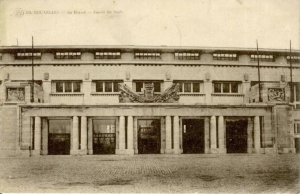
Second World War, name change and international renown
The stadium passed the 39-45 war without too much trouble. Only the wooden cycling track has disappeared, probably
converted to firewood during the occupation.
At the end of the war, the stadium is renamed "Heysel Stadium".
After the war, the stadium finds its vocation and hosts various events like a boxing match between the legendary French Marcel Cerdan against Belgian Cyrille Delannoit who will see the astonishing victory of the Belgian underdog, or in 1950, the European Championship of Athletics .
As for football, the Heysel Stadium hosts from 1954 the final of the Belgian Cup. The White Star (and his successor, the
Racing White) will take up residence there in the 60's (without meeting popular success) and Sporting Anderlecht will play
a few European matches.
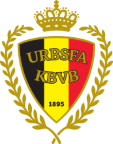
Since the 1950's, two new interclub competitions have been held annually : the Champions Cup (CE1) and the Cup Winners' Cup (CE2). The prestige of the stadium and the central place of Belgium in Europe will bring six finals to Heysel, while waiting for 1985 :
- 1958, Real Madrid - AC Milan (3-2), CE1,
- 1964, Sporting of Portugal - MTK Budapest (3-3, replay at Bosuil Stadium, 1-0), CE2,
- 1966, Real Madrid - Partizan Belgrade (2-1), CE1,
- 1974, Bayern Munich - Atletico Madrid (1-1 and 4-0), CE1,
- 1976, Sporting Anderlecht - West Ham United (4-2), CE2,
- 1980, Valencia CF - Arsenal (0-0, 5-4 shots on goal), CE2,
- 1985, Juventus of Turin - Liverpool (1-0), CE1.
Finally, in 1972, the European Football Championship stops at home. Beside the stadiums of Bosuil (Antwerp), Emile Versé (Anderlecht) and Sclessin (Liège), the Heysel will be the scene of the final between the Federal Republic of Germany and the USSR, won by the Germans on the score of 3 -0. In the midst of the Cold War, this match was an illustration of the clash between the West and the Eastern Bloc. Fortunately, no incidents noticed.
From an infrastructure point of view, the stadium remains unchanged for 41 years. It will be necessary to wait until
1971 to see the first works to engage. Thus, a new tartan athletics track has been installed and, in the process,
a revolutionary lighting. Finally, a new covered stand has been erected facing the main stand in 1974. Offering only
seating, the capacity of the enclosure falls to about 50,000 places.
From 1977, these new facilities had allowed the annual holding of the Ivo Van Damme Memorial, an athletics meeting.
This competition, founded in honor of a Belgian two-time Olympic medalist at the 1976 Olympic Games in Montreal, died
some time after his Olympic coronation, had regularly seen the records fall and will acquire over the years an excellent
reputation.
Since then, the Van Damme Memorial is a must for all world top athletes.
If a new track, a new stand and a new lighting have allowed the stadium to offer a second wind, the buildings of 1930 had no right to special treatment.
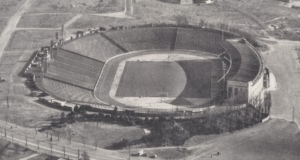
Butchery live

The popularity of football is at its peak. The finale of the century, according to the press of the time, is about to begin at Heysel Stadium. In the stands, it's madness : two prestigious clubs and very popular will try everything for the whole to reach the summit of European football. Supporters of both clubs literally invade Brussels.
Unfortunately, the reputation of these same supporters is well established. Both the Italian side and the English side, hooliganism is to be feared, and an imposing police device set up in the center of the city. By cons, on the side of the stadium, it places that a few police and access controls to the stands are quickly overwhelmed.
The authorities had planned to completely separate the two camps : the English on the Wemmel side (blocks X and Y) and
the Italians on the Atomium side (blocks M, N and O). Between the two, in the side stand, the neutral spectators.
On the other hand, the block Z, contiguous to the blocks devolving to the English, was intended to accommodate Belgian spectators,
therefore neutral. Due to poor controls, some Italians manage to slip into the Belgian block Z.
In a few minutes, the maximum capacity of the stadium is exploded and after filling the various blocks, the doors are closed.
The trap is in place. Of the 50,000 places available, almost 62,000 people in the stadium. No need to give a view about safety.
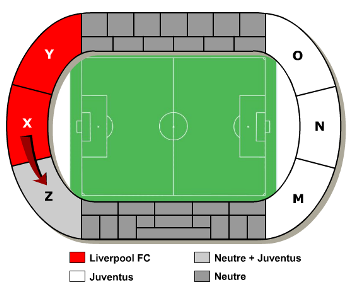
Stadium partitioning plan

The transalpine supporters never cease to launch hostile songs to the English. These, alcohol and helping heat, respond by loading to the block Z, where some Italians have been seen.
This practice of taking a stand was a tradition across the Channel but was totally unknown here. As a separation, there was only a double fence and less than ten policemen in the buffer zone. Obviously, this derisory device was not enough.
Totally panicked, the occupants of bloc Z took refuge at the end of the tribune. Under pressure, an old wall and armrests collapsed. The height of misfortune, the gates towards the field are firmly closed and the disaster happened : people stumble on the aging steps of the stadium and are trampled by people above them who were also seeking to flee . Finally, the fence between the tribune and the field gives way, and there has been 39 dead and more than 600 wounded.
Meanwhile, on the other side of the stadium, clashes between Italians and the police continue. None of them are aware of what has just happened.
A direct confrontation between English and Italian is narrowly avoided. We don't dare to imagine what that could have been...
In the locker room, it is consternation and total confusion. The UEFA delegates, the organizers of the event, the representatives
of the City of Brussels and the police force don't know what to do : cancel the match, postpone it or play it the same evening,
despite the tragedy.
The fact that everything was filmed and broadcast live by all European TVs and the unrest in the stands, the officials decided
to play the game.
Chance or not, a penalty dropped from the sky offers the victory to Juventus. Detail really unimportant.
Warning ! These videos contain shocking scenes.
Pre-match and various interviews
BRTN report (00:12:05)
Pre-match and summary of the match
RAI report (00:09:36)
View of the stands
RAI report (01:07:25)
Abandonment and trial
The next day, an investigation begins. Responsibilities are quickly established and the Belgian courts strongly
condemn the authorities (UEFA, City of Brussels, Belgian State).
As for clubs, Juventus isn't found guilty while Liverpool is banned from any international competitions for 6 years.
Other English clubs have a 3-year ban.
It was not until the tragedy of Hillsborough in 1989 (96 dead and 766 wounded) that the British authorities took the problem
of hooliganism head-on. France will wait even longer and it is the tragedy of Furiani in 1992 (18 dead and 2357 wounded)
that will initiate the securing of stadiums.
In Belgium, the Magotte commission is created and passes the stadiums of the country with a fine comb.
The stadium is gradually neglected, although renovated at a lower cost. Block Z is rebuilt and safety corridors are established
in the stands. A few finals of the Coup de Belgique and a few matches of the Devils (including a friendly Belgium - Zambia of
anthology, 9-0) take place there but the public no longer responds present.
On the other hand, the Van Damme Memorial continues to stick to it.
Finally, the stadium was definitively closed in 1993.
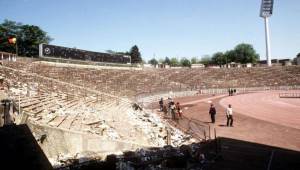
Redemption and new finale
Although it is football that has tarnished the image of the stadium, it will be the same sport that will however
make it his nobility back.
The country hasn't benefited for nearly a decade from a national stadium and Cup finals and matches of the national team
are held in the stadiums of clubs, which begins to annoy the same clubs.
At the beginning of the 1990's, an ambitious project is set up : Belgium is applying, jointly with the Netherlands, for the
organization of Euro 2000.

The original project involved rebuilding three out of four stands, converting all places into seating places and covering all the stands. On the other hand, the lighting, the tribune dating from 1974, the monumental facade as well as the track of athletics will be kept intact.
After a year of work, the stadium was inaugurated on August 23, 1995, 65 years to the day after the first baptism. The opponent of this event will be Germany (defeat 1-2) and the stadium will be named "King Baudouin Stadium", in honor of the fifth King of the Belgians, who died two years ago. The capacity drops sharply to reach 40,000 places.
International matches are coming back (and too the Cup final). No problem, which will prompt UEFA to entrust Brussels with
its first European final since the sad evening of 1985.
With full stands, Paris-Saint-Germain beats Rapid Vienna 1-0 and wins its first Cup Cup. After some fears, the stadium finally
receives the congratulations of all, which helps to restore the honor of the stadium.
Since the officialization of the organization of Euro 2000, the specifications have been changed and UEFA now requires a
stadium of 50,000 seats for the opening match of the Euro 2000.
A new renovation begins immediately by rebuilding the 1974 stand and installing an additional balcony above three stands.
On the other hand, no skybox or infrastructure dedicated to VIP is planned which makes the stadium safe, functional but no
more. This lack of comfort will be more and more obvious when comfort requirements increase with time.
Nevertheless, the Heysel Stadium has managed to erase the shame of 1985 and supporters of the Red Devils begin to come back.
Belgium has reconciled with its national stadium.

An uncertain future
In recent years and with the new popularity of the Red Devils, the King Baudouin Stadium is too small.
But, and it is much more serious for some, its relative discomfort would embarrass more than one and the presence of a track
of athletics would dilute the atmosphere coming from the stands. Somewhat subjective argumentation... The renovation or
replacement of the stadium is increasingly a hot topic of conversation.
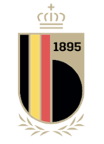
In early 2011, a megalomaniac project named NEO plans a complete reorganization of this area of the city : Kinépolis, Océade and Brupark are requested to go elsewhere by the city for 2014. As for the stadium, it's the complete blur.
Used daily by the athletics clubs, his disappearance would cause serious problems, not to mention the end of the Ivo Van Damme Memorial.
An outcry is against NEO but nothing guarantees the sustainability of current facilities.
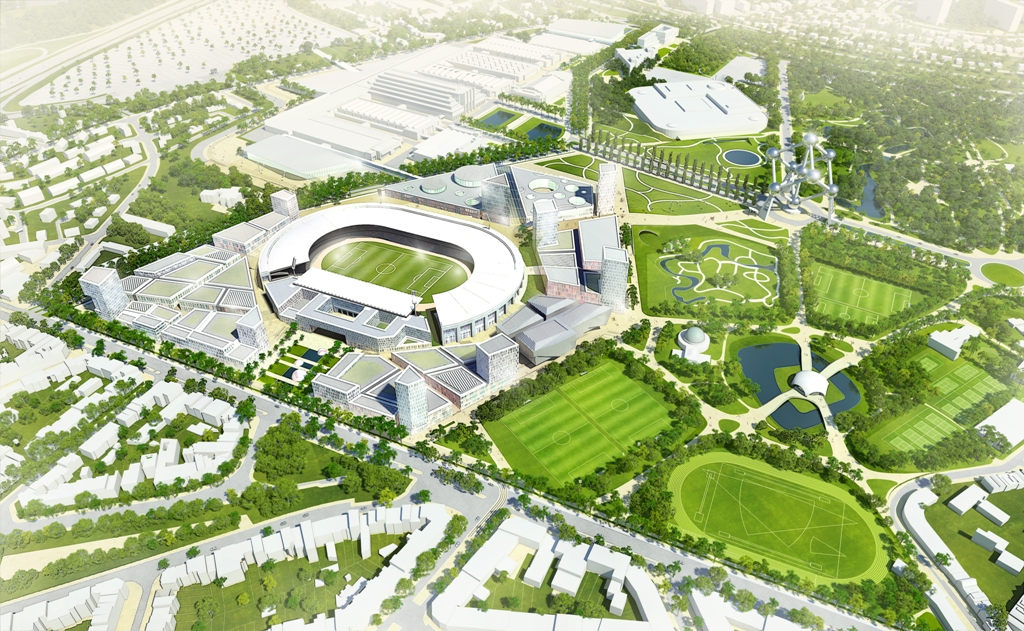
The NEO project has several versions, including one with the stadium
As alternatives to the current stage, the City of Brussels proposes to build a new stadium on the C car park of the exhibition palaces (land owned by Brussels but located in the Flemish region, hello politics-community imbroglio) or on a highly polluted site of the SNCB/NMBS, in Schaerbeek. Basically, projects done quickly, without consultation and without long-term vision. A sad habit very Belgian.
Sacrify such a place for the pleasure of a few political representatives is it worth it ?
Wanting to forget what happened in 1985 is not it an insult to the families of the 39 victims ?
Are there no other priorities for Brussels and Belgium ?
The future will tell.
Pictures
Heysel Stadium
The Centennial Stadium, in 1935.
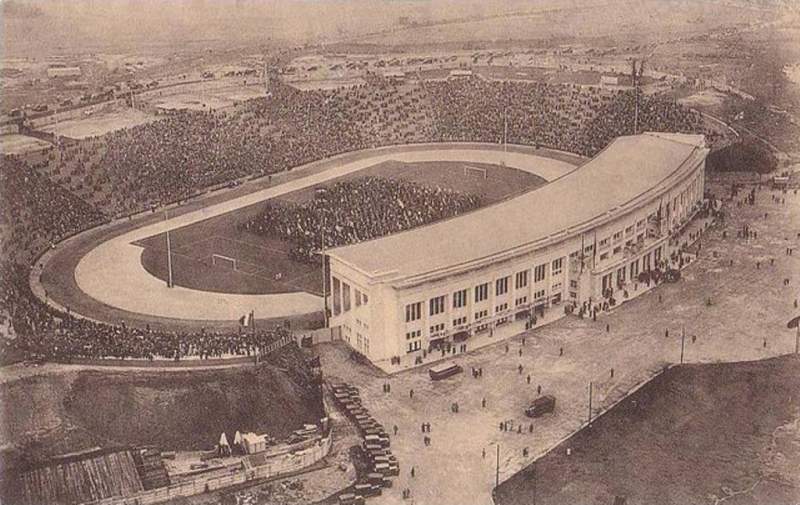
Heysel Stadium
From another angle, towards the site of the future Atomium.

Heysel Stadium
The Art Deco facade of the main stand.
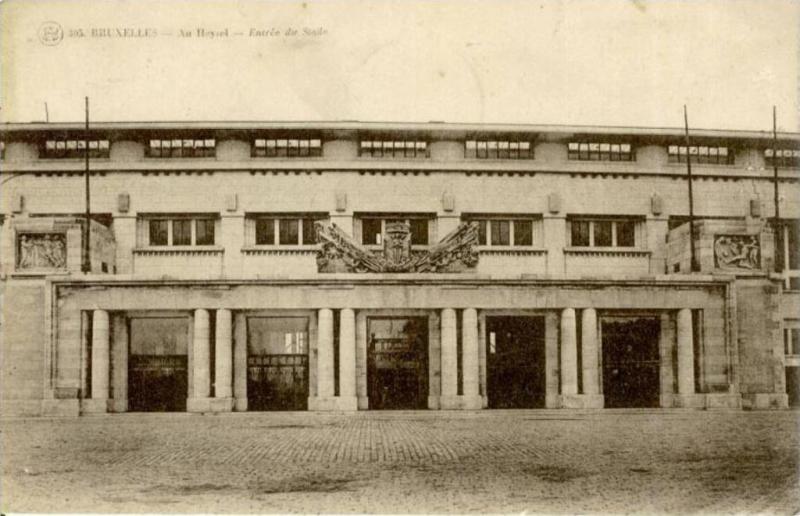
Heysel Stadium
The main portal, the only vestige preserved during the reconstruction at the end of the 20th century.
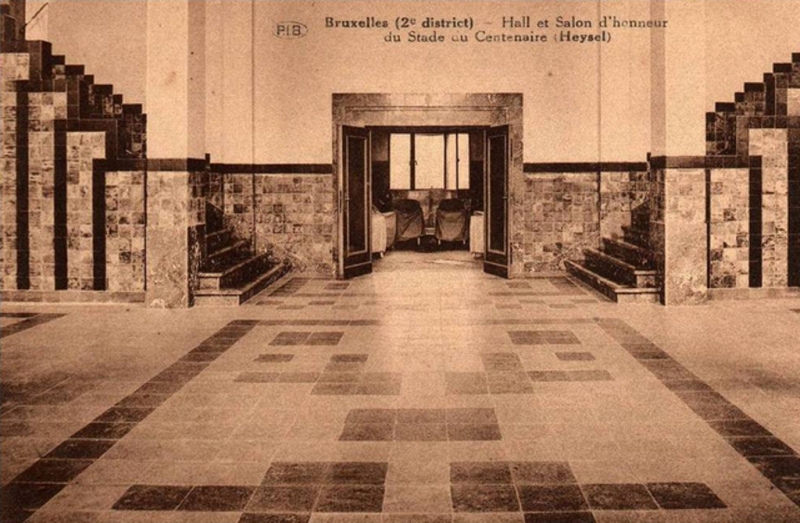
Heysel Stadium
The hall of the main stand.
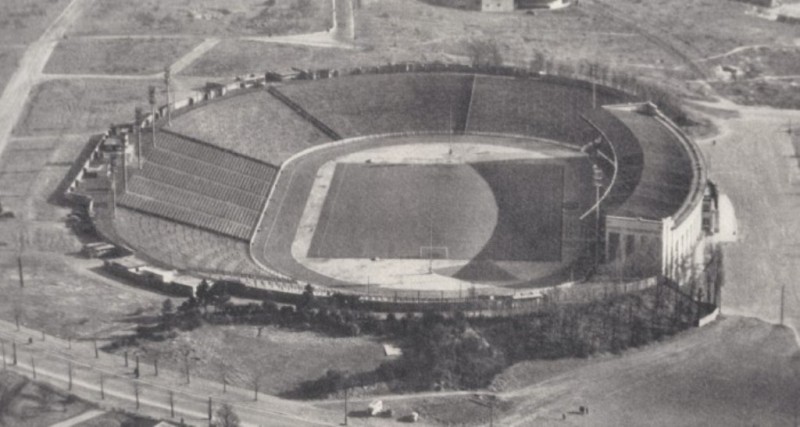
Heysel Stadium
The compartmentalization of the terrasses will remain the same until 1985.

Heysel Stadium
The wooden cycle track, which will disappear during the Second World War.
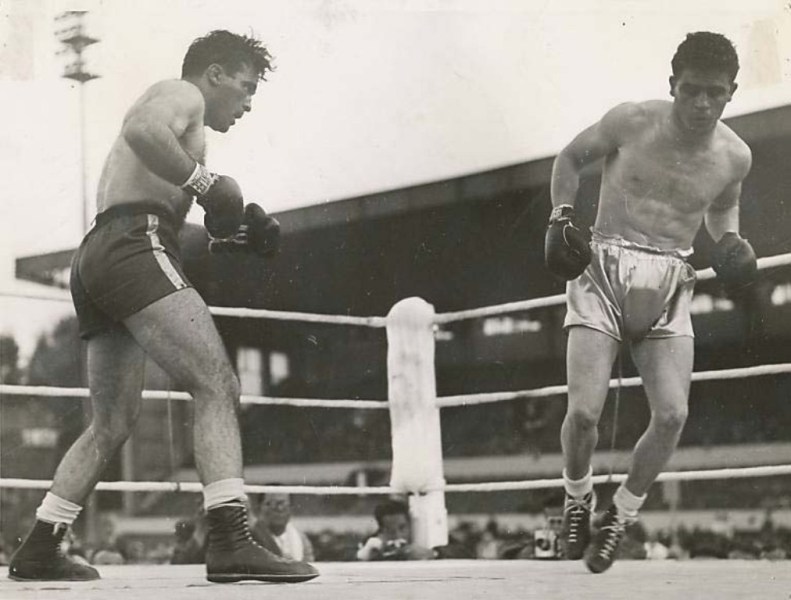
Heysel Stadium
European Boxing Championship match at Heysel on May 23, 1948. The Belgian Cyrille Delannoit won, to everyone's surprise,
the title against the French Marcel Cerdan.
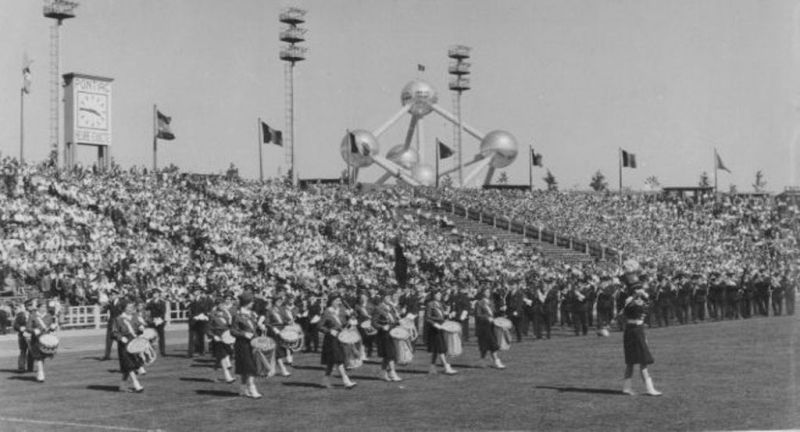
Heysel Stadium
Exhibition at the Centennial Stadium, probably during Expo 58.
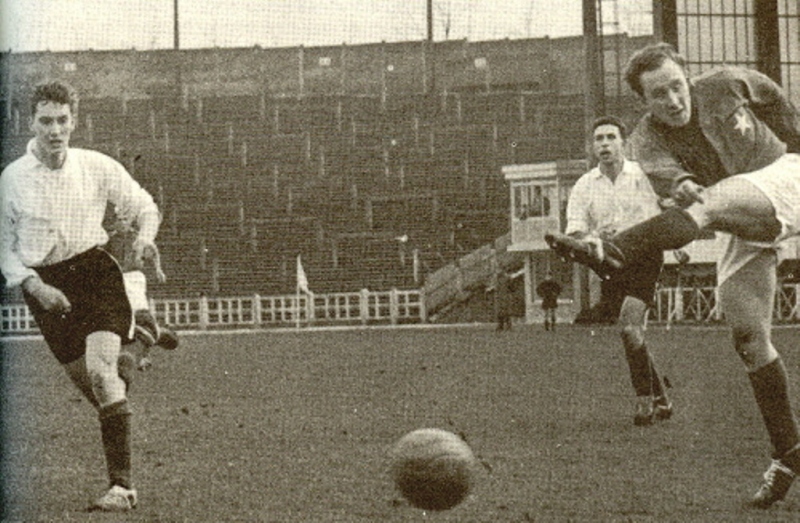
Heysel Stadium
In 1962, a desperately empty Heysel hosted the White Star - Racing de Bruxelles derby for the last time.
These two clubs merged at the end of the season to form the Racing White.
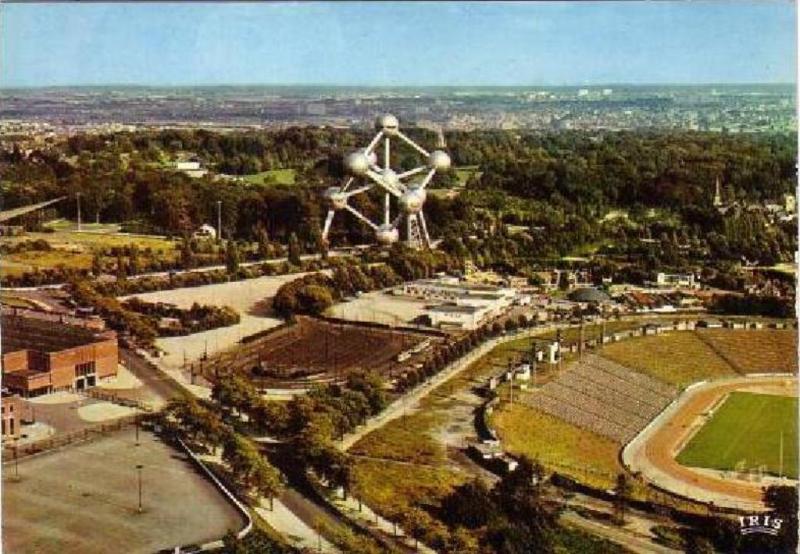
Heysel Stadium
The Heysel plateau will keep this face for nearly 30 years after the Universal Exhibition.
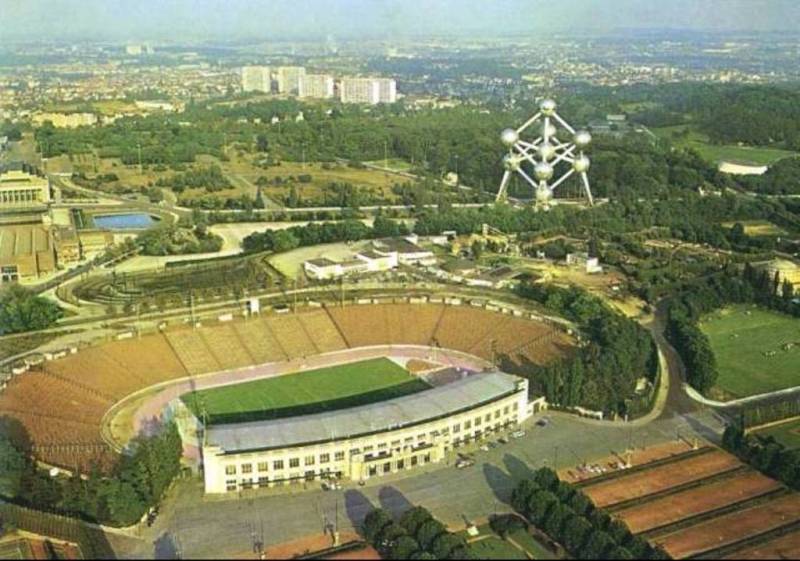
Heysel Stadium
Late 60's.
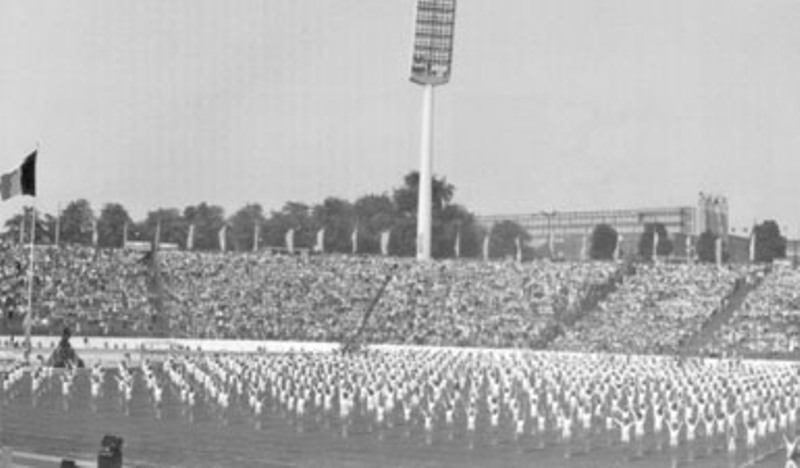
Heysel Stadium
Gymnastics exhibition at the Heysel in the early 1970's.
The imposing lighting pylons have just been installed.
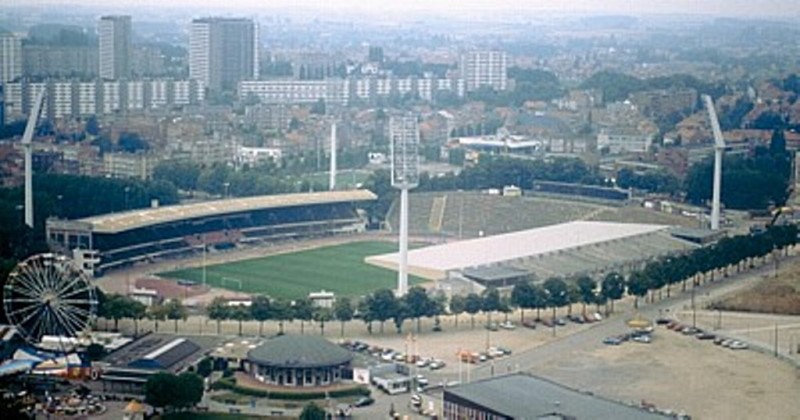
Heysel Stadium
At the dawn of the 1980's.
In the foreground, the Meli-Park amusement park.

Heysel Stadium
During the 80's.
From a distance, the stadium still looks great.
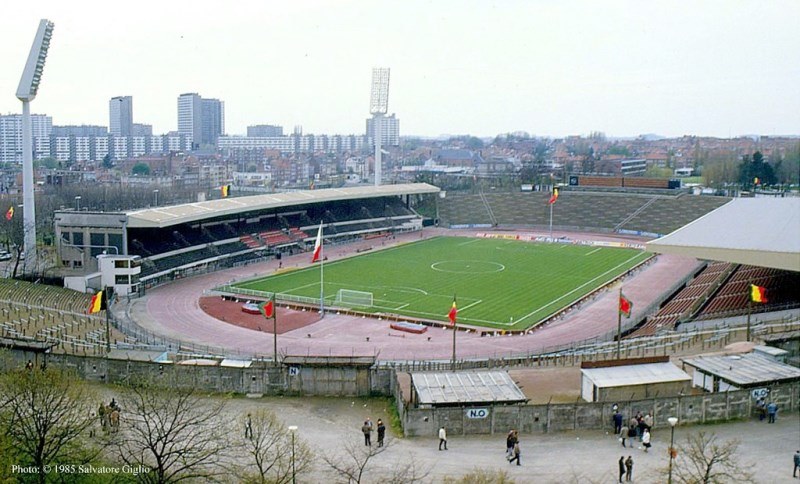
Heysel Stadium
The old stadium on the eve of the 1985 Champions Club Cup final.
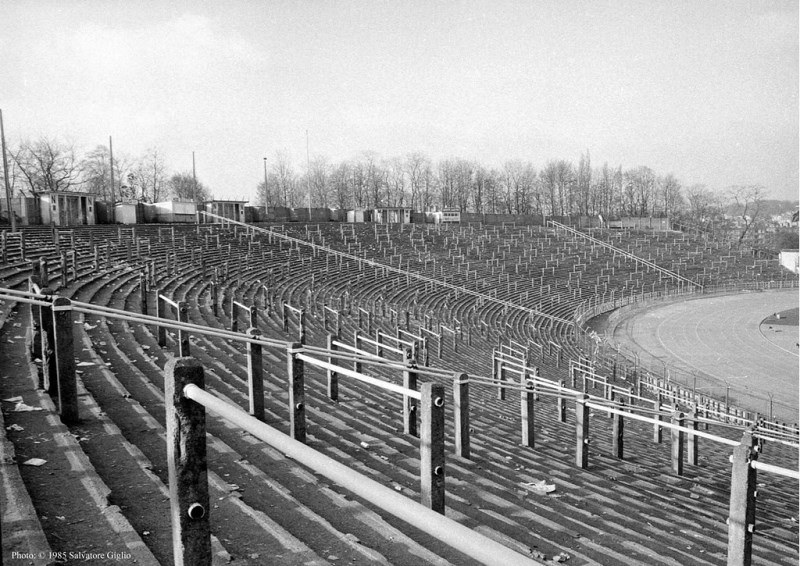
Heysel Stadium
Blocks M, N & O, where most of the Italian supporters will be parked.
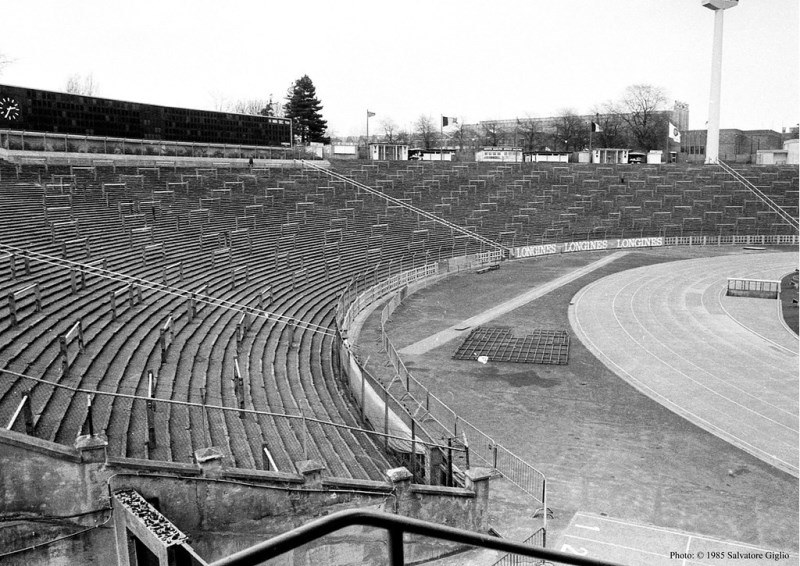
Heysel Stadium
Blocks X, Y & Z, future theater of the drama.
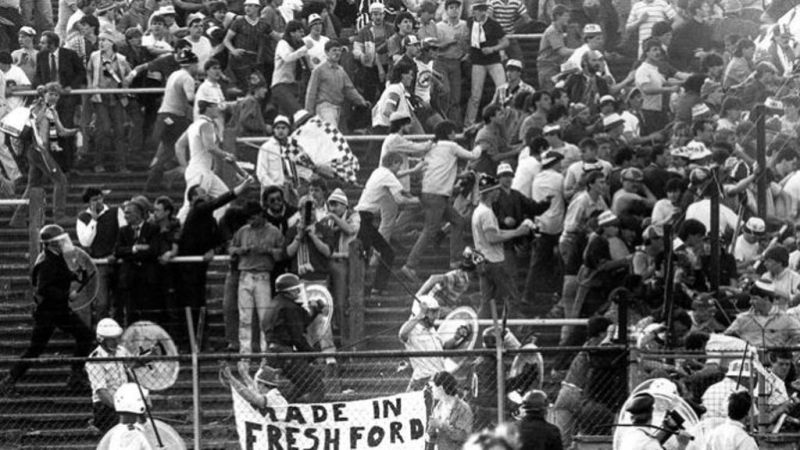
Heysel Stadium
The pathetic face of a band of barbarians...
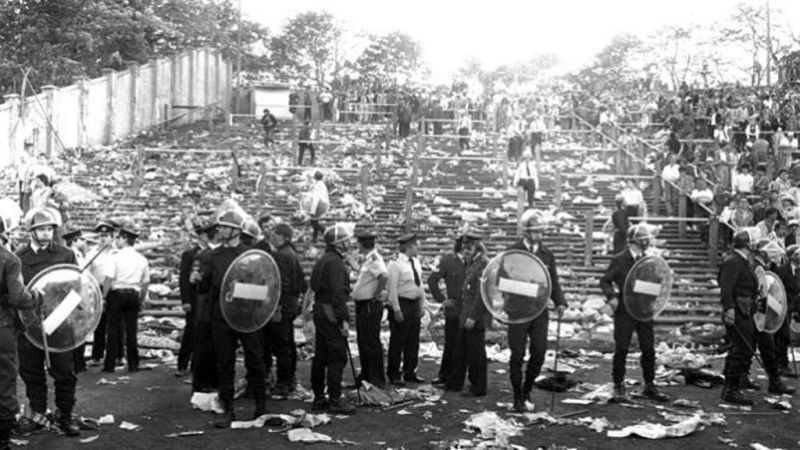
Heysel Stadium
Block Z after the tragedy.
Despite the dead and injured, the match will take place.
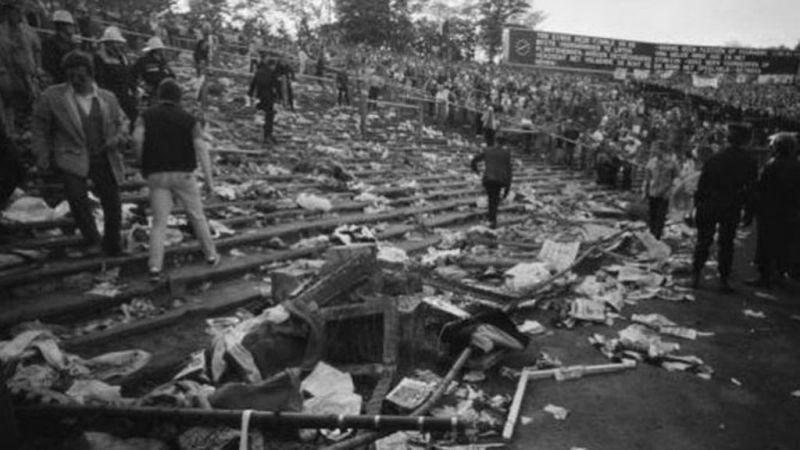
Heysel Stadium
Postponing (or canceling) the match would have been suicidal given the enormous tension still present in the stands.
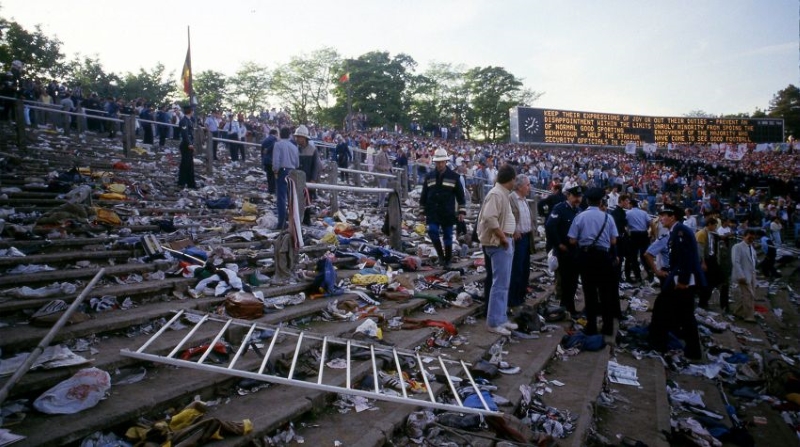
Heysel Stadium
...
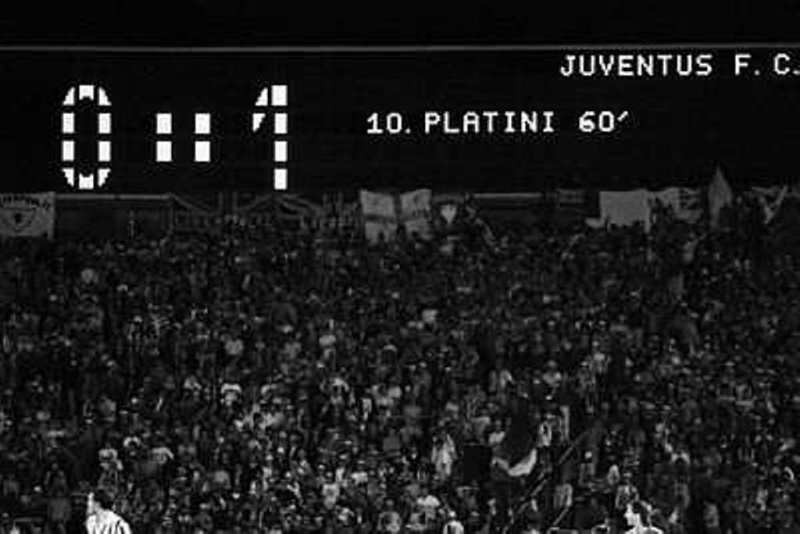
Heysel Stadium
Although totally ridiculous during this disastrous evening, a winner was needed.
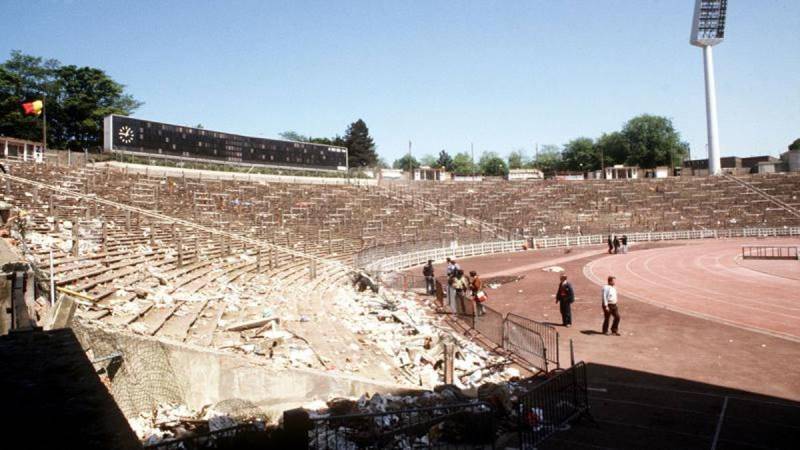
Heysel Stadium
The day after the match : collapsed walls, torn armrests and fences and shame for European football.
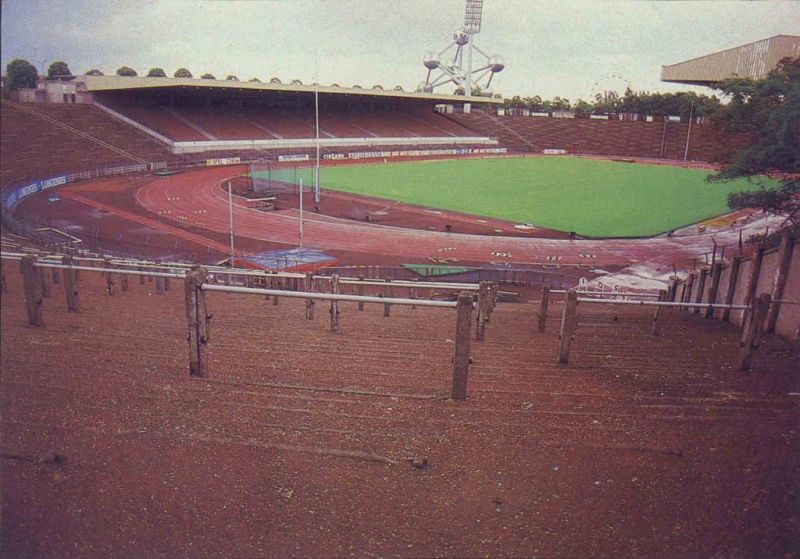
Heysel Stadium
View from the top of block Z, near the entrance. No renovations and almost no maintenance since 1930.
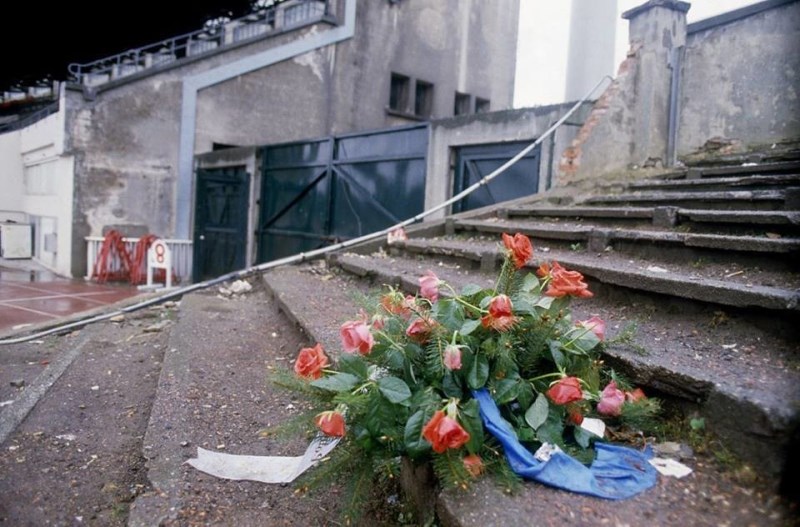
Heysel Stadium
Where the wall collapsed.
RIP...
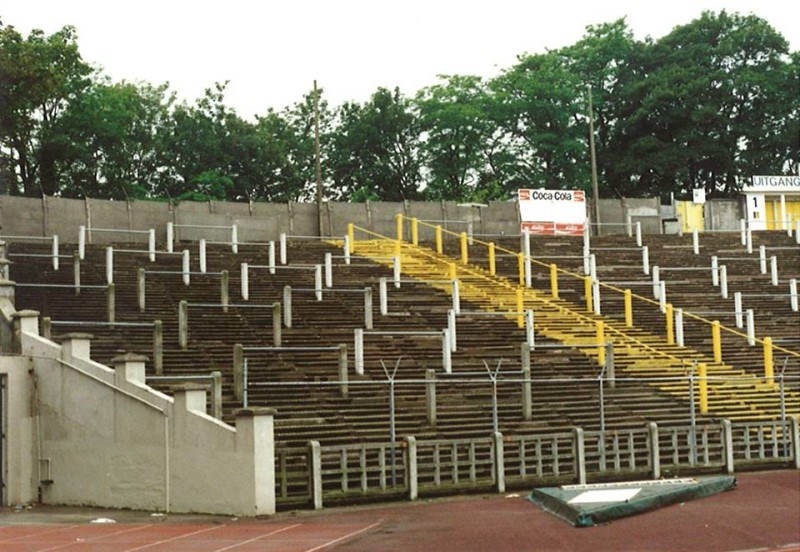
Heysel Stadium
The rebuilt block Z and the new security corridors (in yellow).
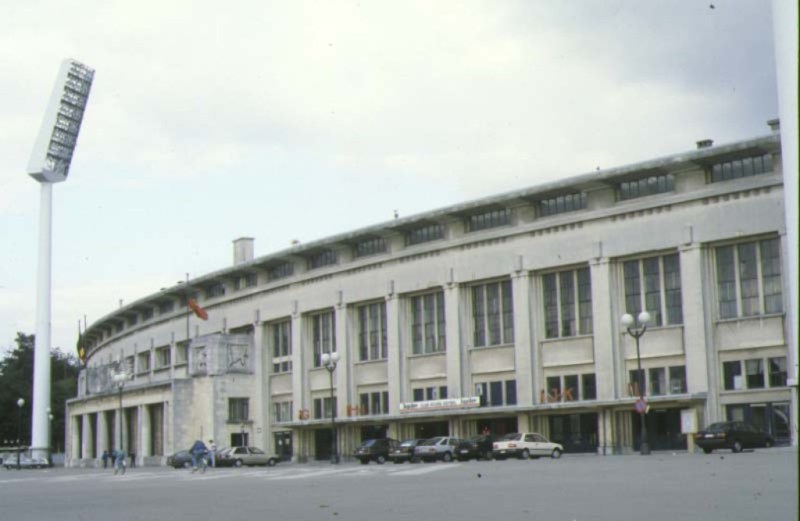
Heysel Stadium
The beautiful facade of a condemned stadium.
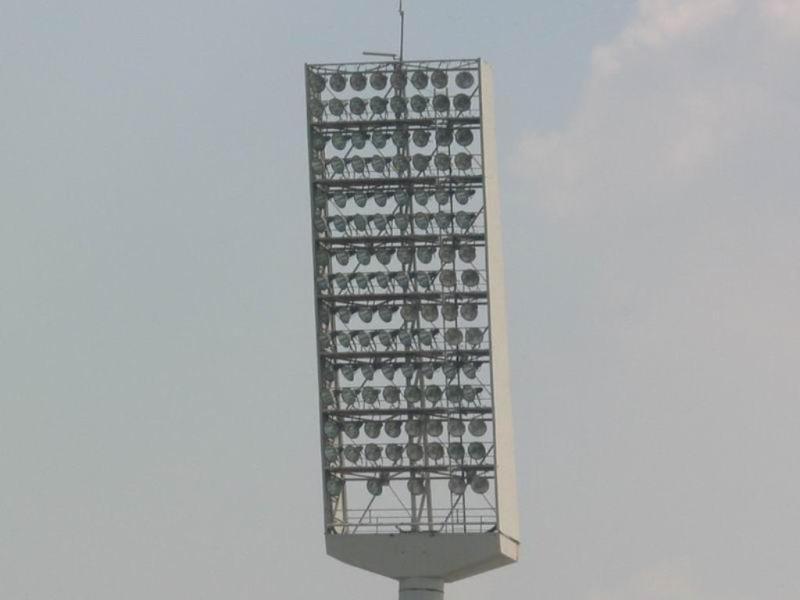
Heysel Stadium
One of the lighting pylons.
They will long remain the most powerful and efficient on the continent.

Heysel Stadium
The long-awaited reconstruction began in 1993.
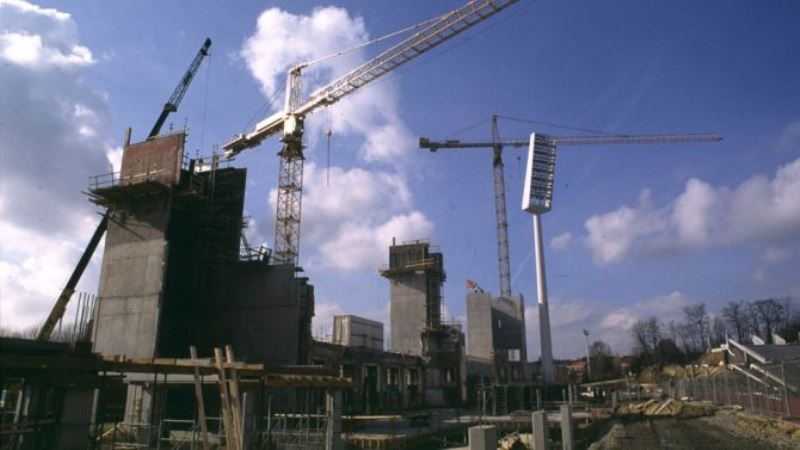
Heysel Stadium
Construction of the new main stand.
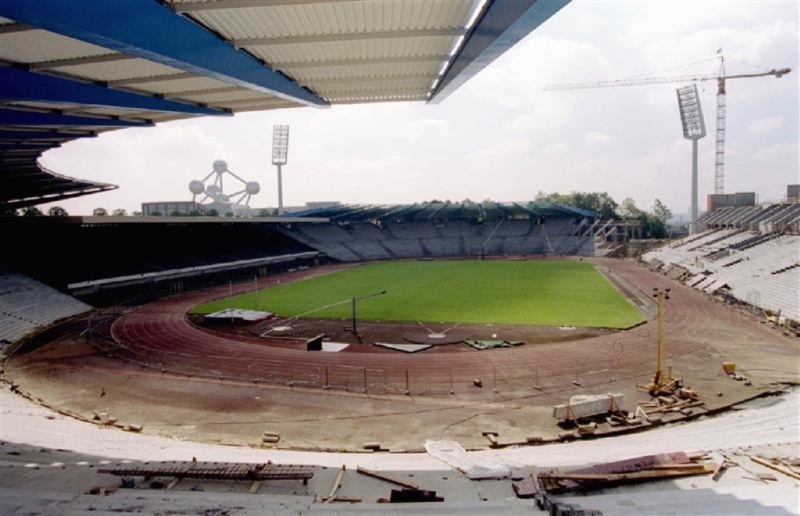
Heysel Stadium
The seated grandstand from 1974 (on the left) will resist for another 4 years.

Heysel Stadium
The new stadium ready for Euro 2000.
In the foreground, Brupark which replaced the old Meli-Park.
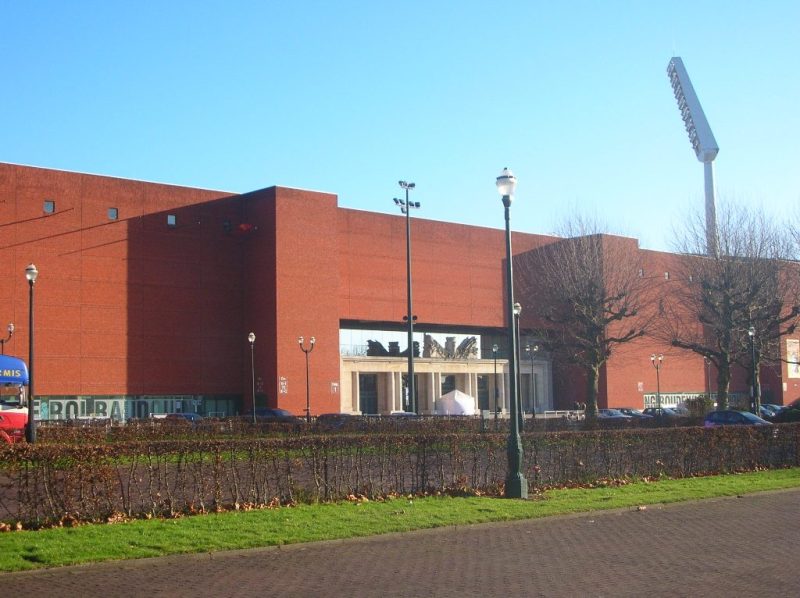
Heysel Stadium
The monolithic facade of the new stadium. The Van Neck portal fits into it as best it can.
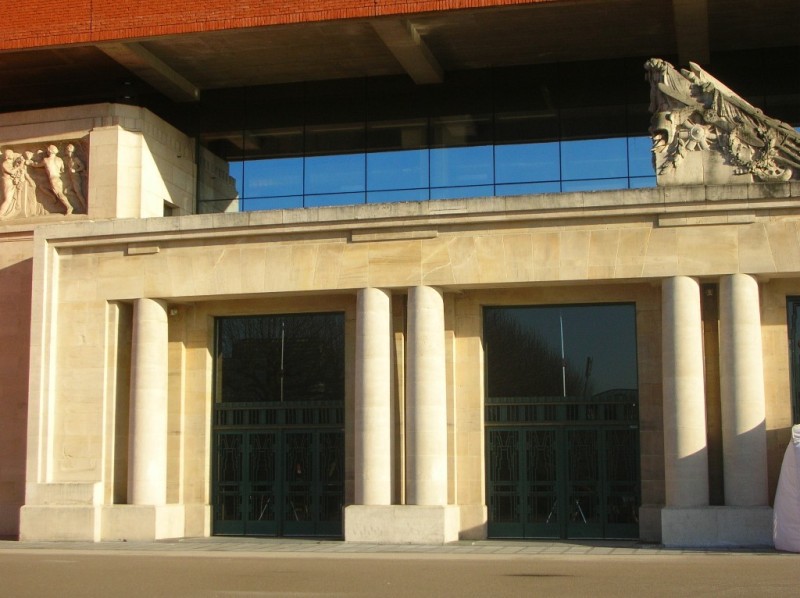
Heysel Stadium
Portal details (1/2).
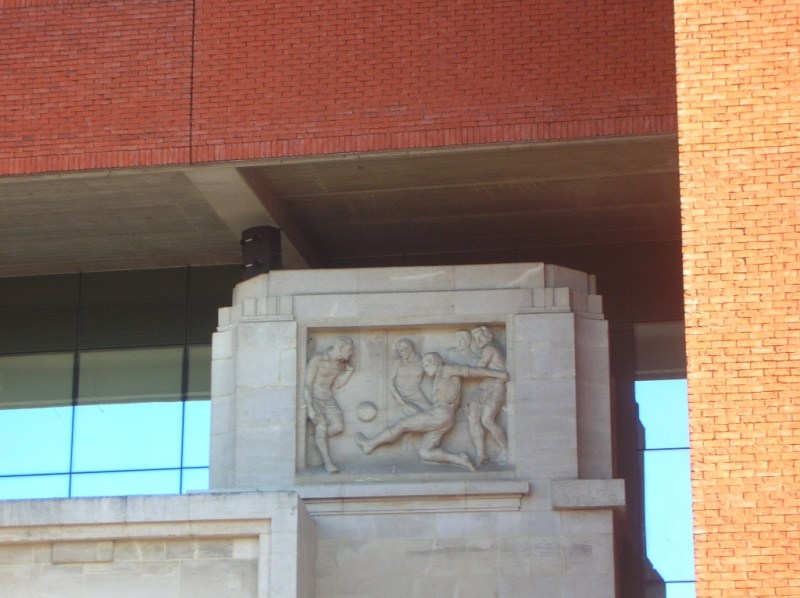
Heysel Stadium
Portal details (2/2).

Heysel Stadium
Place of joys and sorrows, this stadium deserves a little more respect.
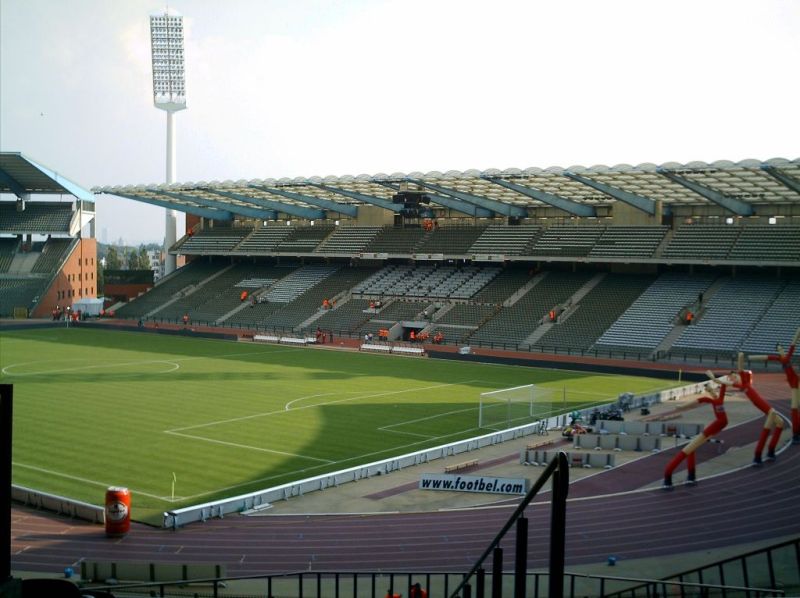
Heysel Stadium
Pre-match of a Belgium-Portugal in June 2007.
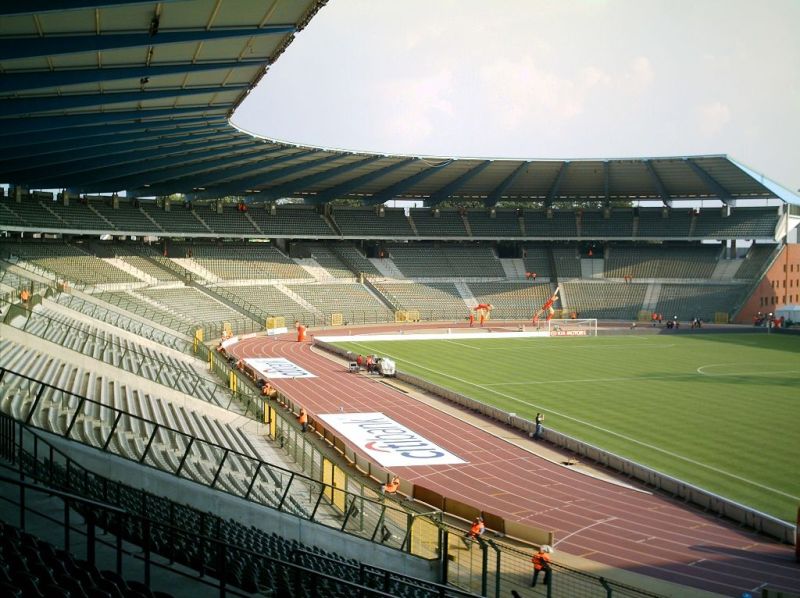
Heysel Stadium
36,816 places on the first level, 13,277 on the second.
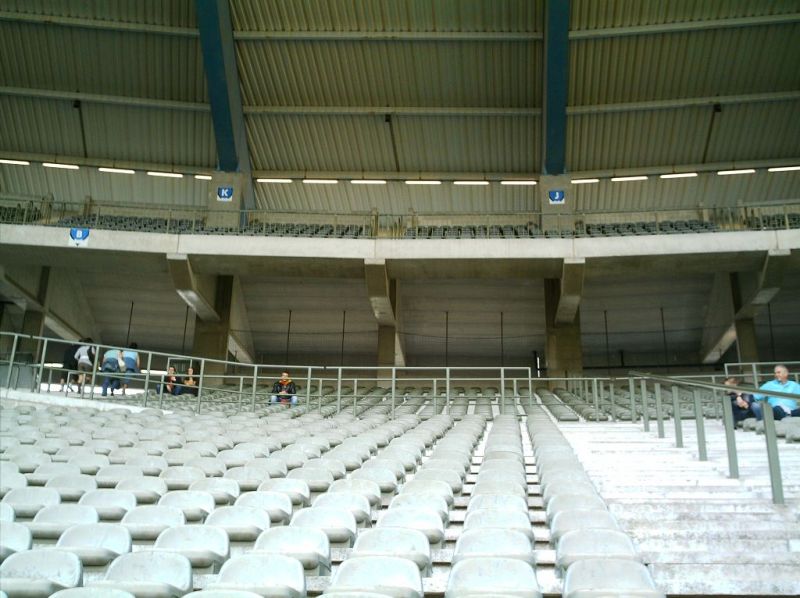
Heysel Stadium
Concrete and metal, some will regret... Indeed, this is not a theatre.
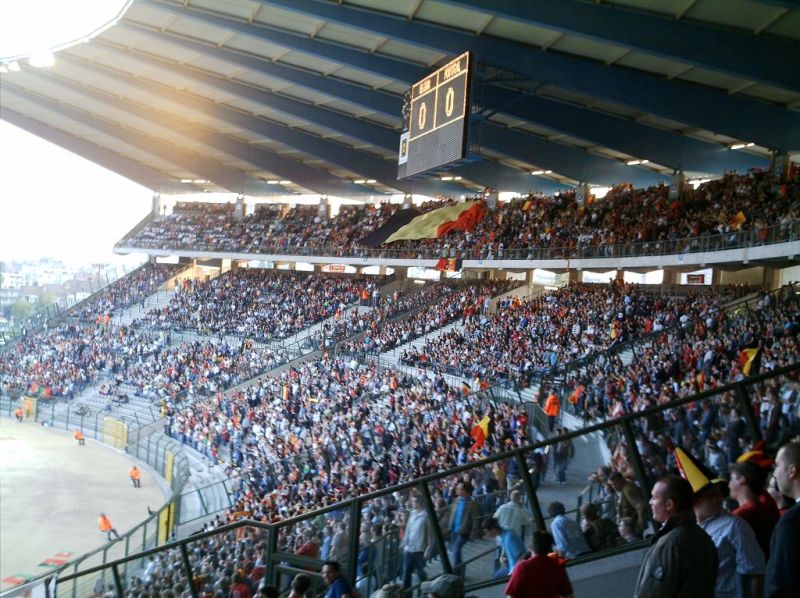
Heysel Stadium
Atmosphere in the stands.
In the background, the ex-block Z.
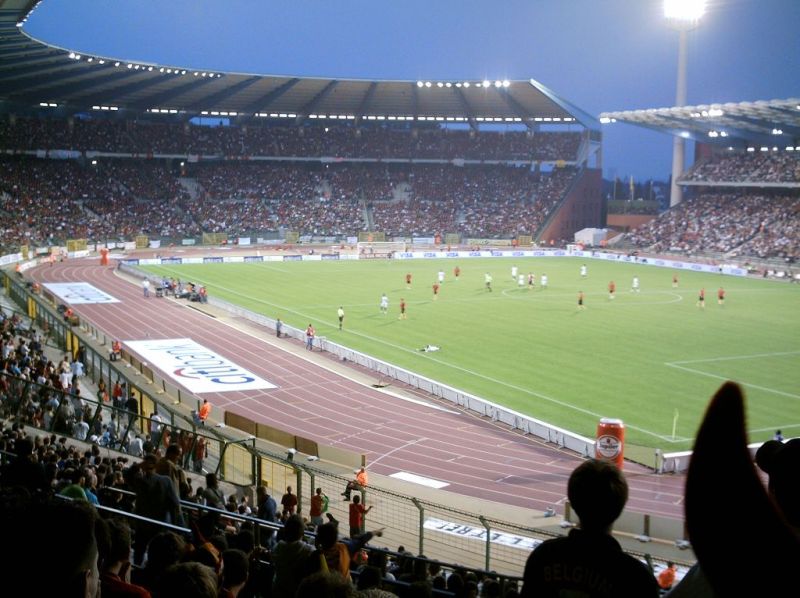
Heysel Stadium
Are these the last years of an almost century-old stadium ?
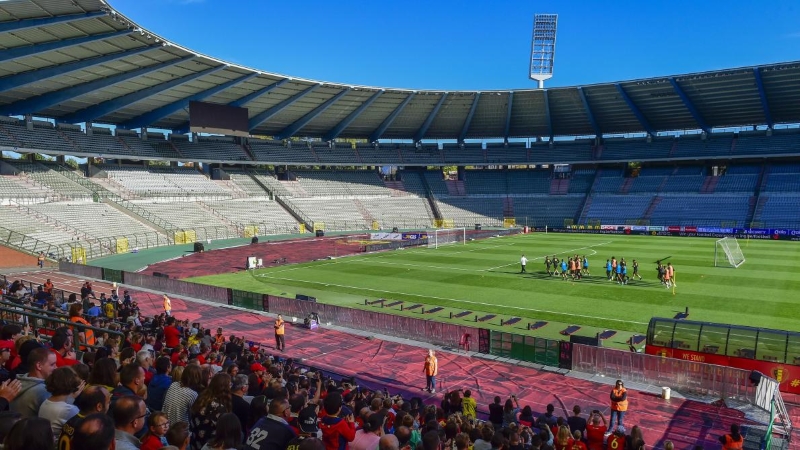
Heysel Stadium
This stadium is used daily. What will happen to its users in the event of demolition ?
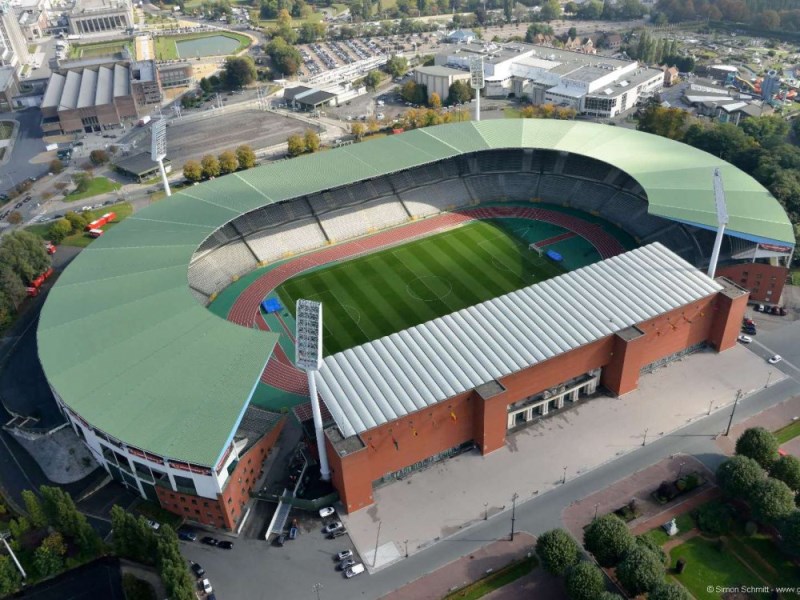
Heysel Stadium
The demolition of the "old" stadium is constantly announced, then postponed.
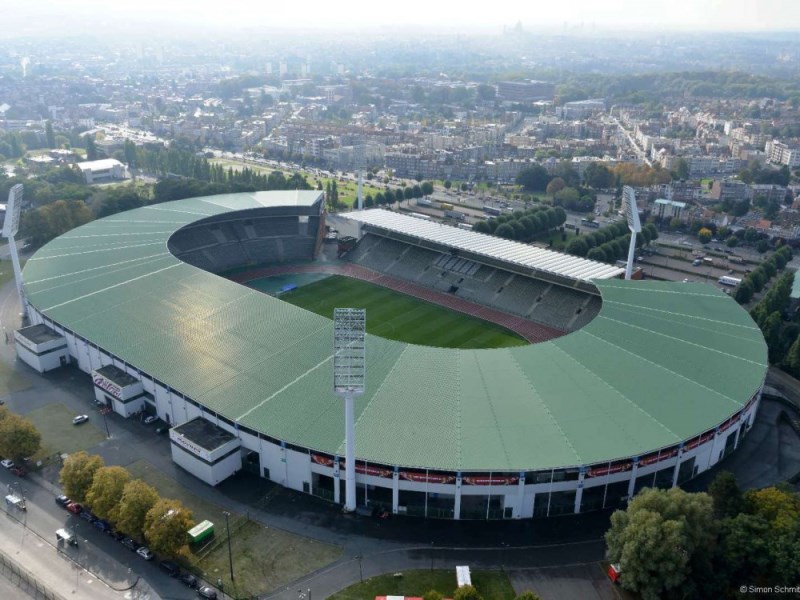
Heysel Stadium
However, it is an important place that could be renovated at a lower cost.
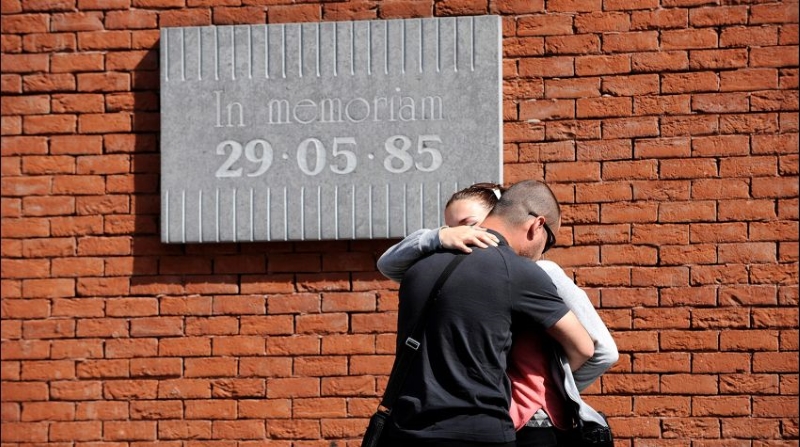
Heysel Stadium
In memoriam. May this place be preserved with respect for the victims.
Note
-
This article comes from my former website foothisto.be and was published on June 16, 2013.
It has been somewhat modified and updated lately (November 2019).
Related page
- Page dedicated to the visit (in several stages) of Brussels.
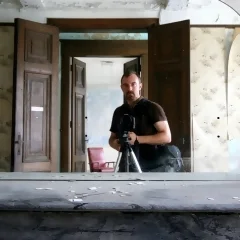
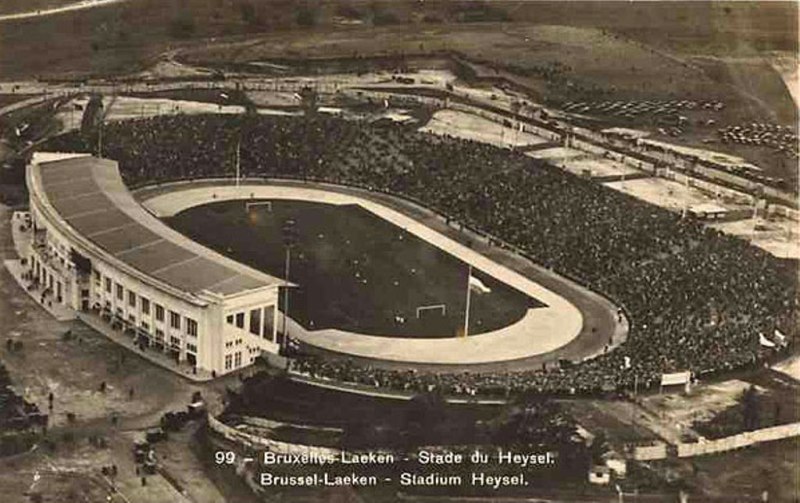
Soyez le premier & devenez quelqu’un de bien • Be the first & become a good person